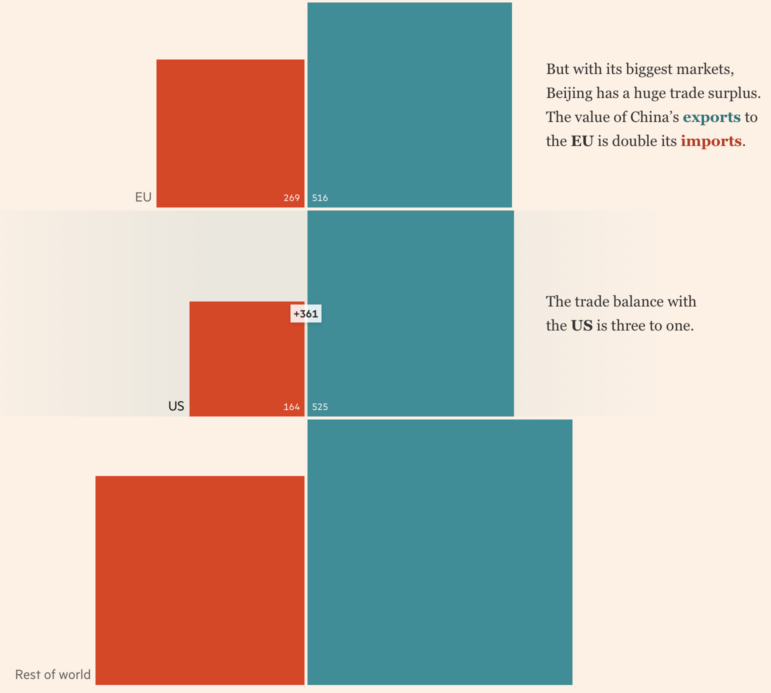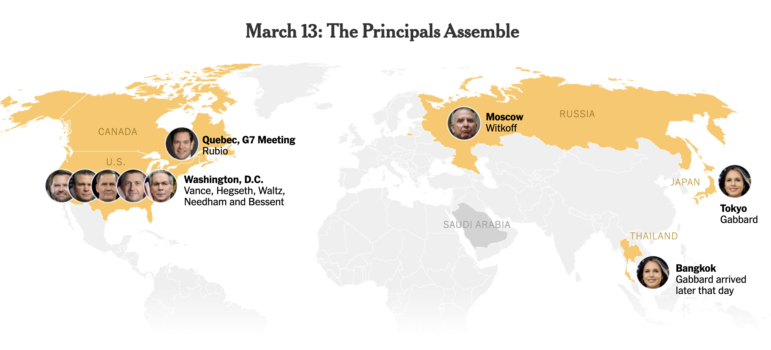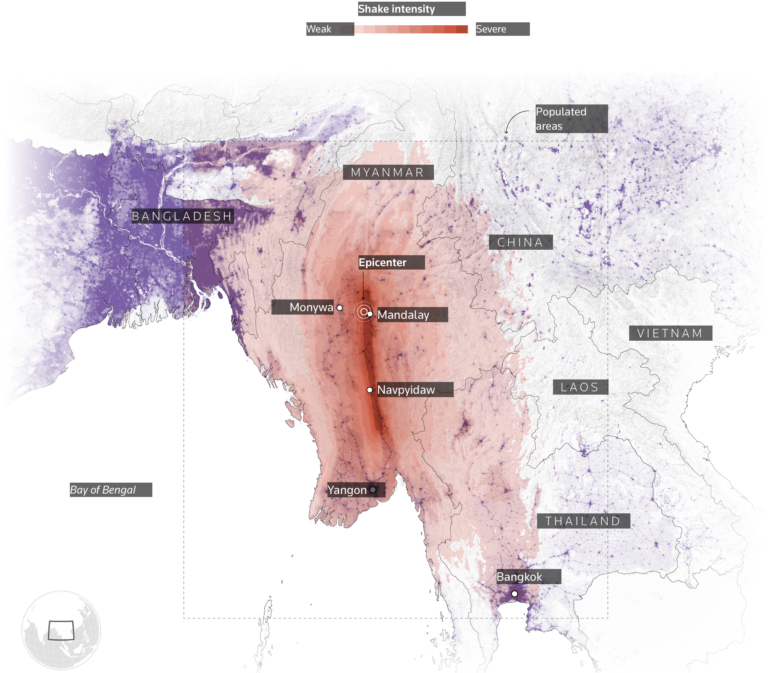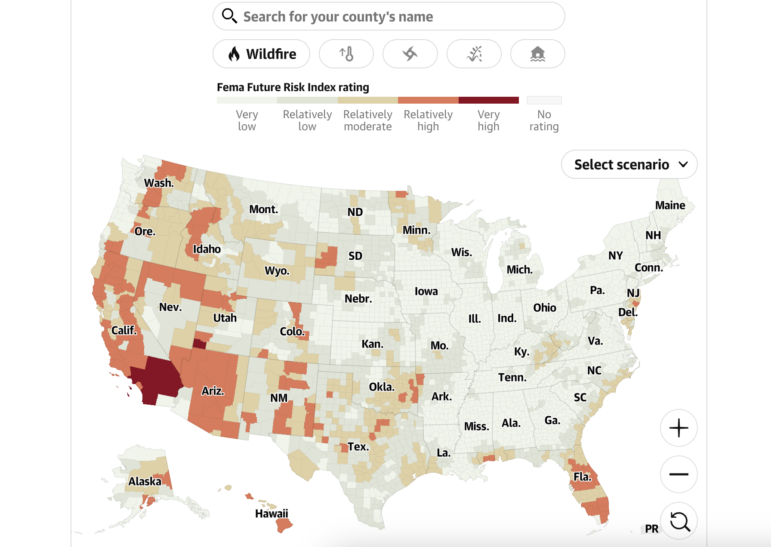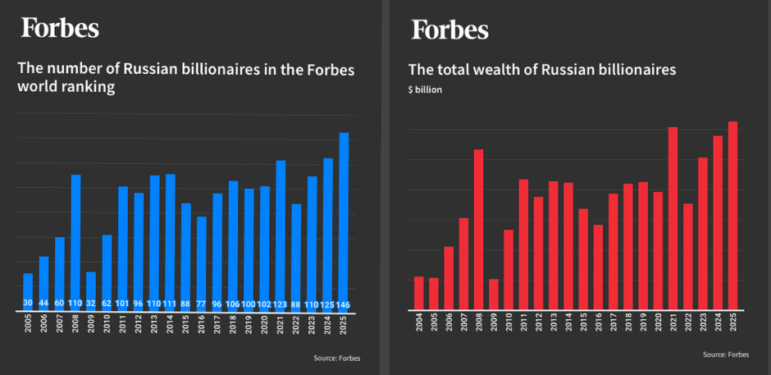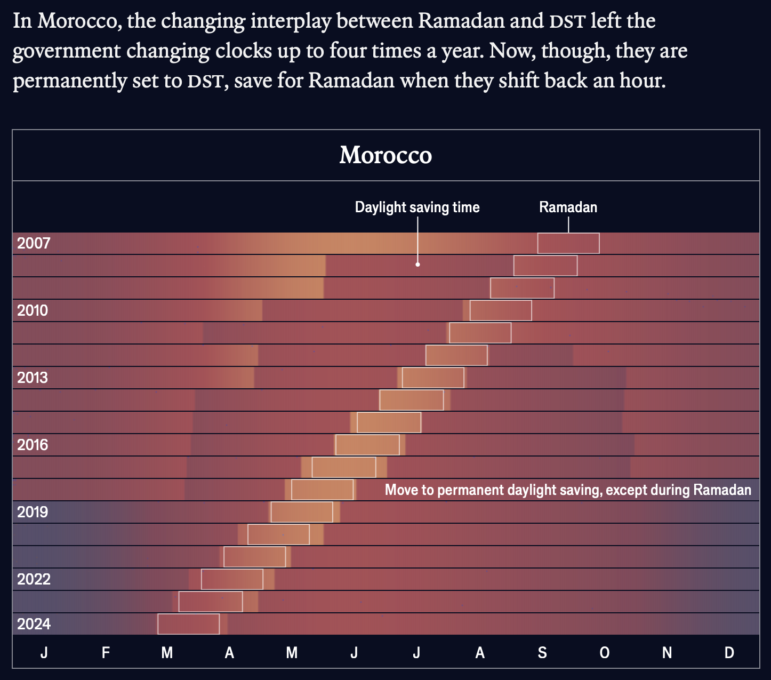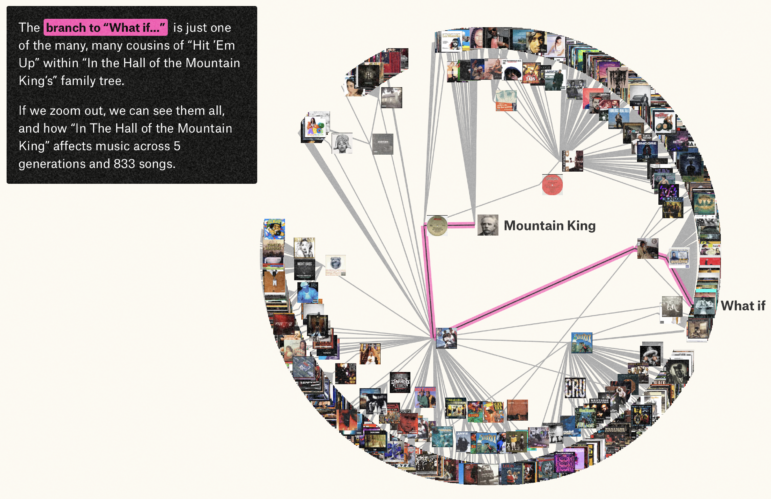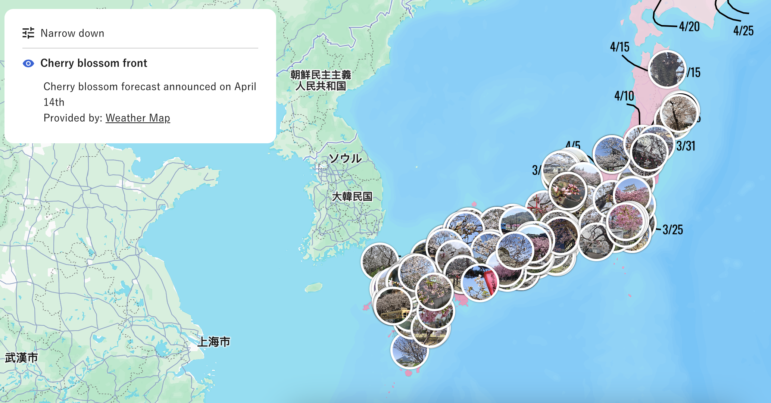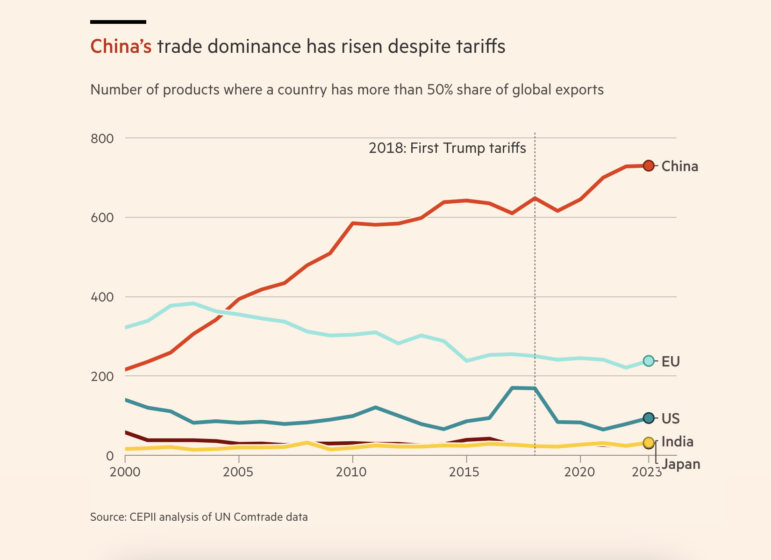

Image: Screenshot, Financial Times
Rolling Trade Wars, Earthquake in Myanmar, Oil in the Amazon, and Politics of Time Zones
Donald Trump’s stop-start trade war continues. The Financial Times explains how China’s record trade surplus helped trigger the tariff war with the US president, and The Washington Post provides a live tracker of all the tariffs that Trump has enacted, threatened, and canceled. This edition of our Top 10 in Data Journalism, which considered stories between March 22 and April 11, also highlights an investigation by InfoAmazonia and other outlets into plans for oil exploration in the Amazon rainforest region; a cross-border special feature on women who have to cross their country’s borders to get an abortion in Europe; a story by The Economist that explains the often political reasons why countries adopt certain time zones; and an Asahi Shimbun mapping of Japan’s spring cherry blossoms.
China’s Trade Surplus and Trump’s Tariff War
According to the Financial Times, China’s record trade surplus — where a country’s exports exceed its imports — helped trigger the US president’s tariff war. China’s surplus last year reached almost US$1 trillion. Using Chinese customs data, the FT presents a series of charts on trade relations between Beijing and other countries and the products traded that add up to its 2024 surplus. The data shows how, for example, China produces almost a third of all the world’s manufactured goods and how the country is increasing its surplus through strategic trading partners. It also presents a series of maps showing how Chinese groups have significant stakes in key battery-making raw material mines around the world.
Still confused about the active and proposed US tariffs? Check out this live tracker from The Washington Post that provides an interactive and illustrated chart of the full tariff situation.
Signalgate: US Government Group Chat Leak
In March, a high-ranking US government national security official inadvertently added the editor-in-chief of The Atlantic magazine to a group on the Signal messaging app, where US officials were discussing secret military plans. The journalist published a report detailing the content of conversations about airstrikes on Houthi rebels in Yemen, which were eventually carried out. The use of a commercial messaging app like Signal by such high-ranking officials to discuss such sensitive matters left many shocked. But, according to The New York Times, a closer look at the messages and where the group’s participants were when they were sent reveals that the security vulnerabilities were even more pronounced. The Times geolocated the group’s participants during the chats, using official photos and videos or those shared on social media and flight tracking information and metadata, and correlated their physical location on a map during the group’s three days of conversation. The results suggest that several of the officials may have engaged in confidential communications outside of secure environments or on personal devices that could be vulnerable to foreign intelligence exploitation and undermine relations with allies.
Earthquake Shakes Southeast Asia
On March 28, a powerful 7.7 magnitude earthquake struck Southeast Asia, with its epicenter near Mandalay, Myanmar’s second-largest city. It was the most powerful earthquake to hit the country since 1912 and the second deadliest in modern Myanmar history. The quake caused extensive damage in the country as well as in neighboring Thailand, collapsing buildings more than 600 miles away in Bangkok. Hundreds of homes and apartments were also damaged in Yunnan, China, and Ho Chi Minh City, Vietnam. To date, the death toll has risen to more than 5,400, with at least 5,350 in Myanmar and 51 in Thailand, and more than 11,400 injured. Using data from the United States Geological Survey (USGS), Reuters created maps of the earthquake’s epicenter and the region’s earthquake history, infographics on the different types of impact between tectonic plates and the depth of the earthquake, as well as a graph tracking the aftershocks.
Oil Exploration in the Amazon

InfoAmazonia found several countries in the Amazon region were among the top locations for new oil and gas exploration from 2022 and 2024. Image: Screenshot, InfoAmazonia
Oil exploration continues to gain ground in the world and now also threatens the world’s largest tropical forest. According to InfoAmazonia, almost a fifth of the recent discoveries of global oil and gas reserves found from 2022 and 2024 are located in the Amazon. The outlet analyzed data from Amazonian countries compiled up to July 2024 by the Arayara International Institute, which monitors oil activities in the region, and showed through a series of interactive maps where the areas officially delimited for fossil exploration in the region are located and how many of them overlap with Indigenous lands or conservation areas. The report is part of a special, six-part series, coordinated by InfoAmazonia in partnership with GK, Ojo Público, and Rutas del Conflicto, which mapped, over the last year, the socio-environmental damage caused by more than 50 years of oil extraction in the Amazon.
Overview of Immigrants in Switzerland
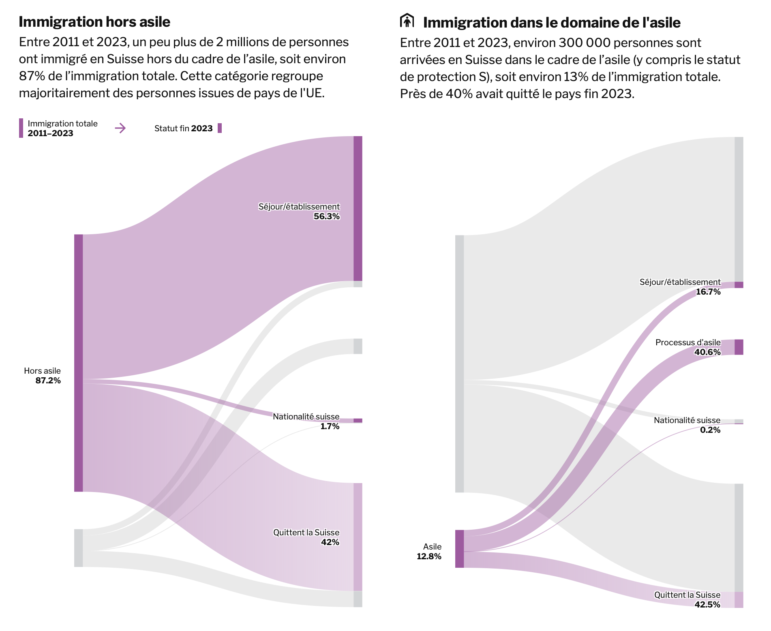
The Swiss-French newspaper 24 heures created Sankey diagrams to illustrate the sources of Switzerland’s population growth from 2011 to 2023. The diagram on the right shows that only 13% of the increase was the result of asylum seekers. Image: Screenshot, 24 heures
The Swiss-French daily newspaper 24 heures explored the reasons behind Switzerland’s population growth between 2011 and 2023. Using data from the Swiss Federal Statistical Office (FSO), the team showed that 2.4 million people settled in the country in those 13 years, including people from the European Union, asylum seekers, or refugees from Ukraine and how many of them were still in the country by the end of 2023. The figures are presented using a dynamic Sankey diagram, which illustrated the evolution of different types of residence permits in the country since 2011. The report also highlighted that, in the period analyzed, around 300,000 people arrived in Switzerland under asylum, roughly 13% of the period’s total immigration. The newspaper noted that this share only contributes marginally to net population growth in Switzerland, but it is precisely the target of an initiative by the right-wing populist Swiss People’s Party, which demands that the Swiss population not exceed 10 million before 2050 and calls on government agencies to take action if that happens. A German-language version of the story is also available.
Tool for Mapping US Climate Risks
As soon as the new administration of US President Donald Trump took office, it began censoring mentions of climate change, climate crisis, and its consequences from several government websites. It also deleted the so-called Future Risk Index, a searchable tool developed by the Federal Emergency Management Agency (FEMA) and launched in December 2024. Based on data from several US federal government agencies, the index provided an overall risk rating, county by county, of the vulnerability of its population to climate shocks and information on projected annual losses this century due to climate threats exacerbated by global warming. That data was preserved by the data consultancy Fulton Ring and is now being used by the Guardian to resurrect and showcase the tool, which the report says would be the first free resource to show how much the impacts of climate change will cost US communities — and provide crucial planning information for local governments, insurers, utilities and others who rely on FEMA. According to the report, the United States was hit by 27 disasters in 2024 that cost $1 billion or more in damages.
Cross-Border Abortion Figures in Europe

A map detailing the legal abortion time limits, in weeks of pregnancy, for each country in Europe. Image: Screenshot, Público
Every year, more than 5,000 European women cross the borders of their countries of origin to access abortion, even from places where the procedure is authorized. This figure was revealed by the cross-border investigation Exporting Abortion, coordinated by the Spanish newspaper Público and published by 11 media outlets from different European countries. Through data and personal testimonies, the project exposed the journeys that European women make to have the procedure in other countries and the varied reasons for this phenomenon, like if the pregnancy is already more advanced than the legal time limit for abortion in a given country or when the fetus has a malformation that local doctors do not consider serious enough to justify terminating the pregnancy. The report features a series of graphs, such as the largest flows of women seeking abortions between European countries between 2019 and 2023, and countries where more women have had abortions abroad than in their own country, such as Poland and Malta. You can read this report in other languages, as well as the other reports in the project here.
Ranking the Wealthiest Russians
International sanctions imposed on Russia by several countries since the invasion of Ukraine in 2022 do not seem to have prevented Russian businessmen from increasing their personal wealth. According to Forbes’ annual ranking of the richest people on Earth, in 2024 the number of billionaires from Russia increased from 125 to 146 people, the highest number in its history. In addition, another record was broken: the combined wealth of Russian billionaires reached US$625.5 billion — the highest value since 2021, the year before the start of the conflict. In addition to graphs, Forbes Russia also presented profiles of the top 20 in the ranking, providing a wide variety of information about each one, such as their net worth, sources of wealth, hobbies, first businesses, and even what sanctions they are subject to.
How Time Zones are Chosen
The Economist notes that, although the basis for a global time zone system was agreed upon during the International Meridian Conference of 1884, without an international organization responsible for this system, it is up to countries to choose their own time zone. And although most nations stick close to solar time, others are more “creative,” for reasons that are often political, economic, or nationalistic. The report presented some examples, followed by maps, such as the city of Kashgar, in the far west of China, where the clock reads 10 a.m. when the sun rises in January. Just across the border in Afghanistan, at this same moment, the clocks read 7 a.m. According to the report, this is the largest time difference between land borders on the planet and exists because, since it was founded in 1949, the People’s Republic of China has maintained a single shared time zone: “Beijing time.” Meanwhile, Russia has 11 time zones — a source of pride. Another curious example is Spain, which has been using Central European Time since the Franco dictatorship era, when it sought to align itself with Nazi Germany, even though by geography Spanish clocks should be one hour behind CET.
Journey Through the DNA of Music
Did you know that one of the most streamed songs of last year, the controversial “Not Like Us” by US rapper Kendrick Lamar contains a sample of the song “I Believe to My Soul” by composer Monk Higgins, which in turn is a cover of a song of the same name by singer Ray Charles? Or that Korean rapper J-Hope’s 2022 song “What If” has roots going back nearly 150 years, to Edvard Grieg’s 1876 orchestral piece “In the Hall of the Mountain King?” In this special, The Pudding tells this and other stories while exploring music’s shared DNA. By considering elements such as samples, remixes, interpolations, and covers, the report traces back through albums to show how some musical legacies are quite obvious and others are much more complex, linking very different songs that span different genres, cultures, and even centuries, forming true musical family trees. Sound on!
Bonus: Mapping Japan’s Cherry Blossoms
One of the most anticipated events for Japanese people and tourists who choose this time of year to visit the country has finally arrived: the blooming of cherry blossoms. To help fans of these beautiful trees, the Asahi Shimbun created the National Sakura Map, a photographic mapping of the event that is updated periodically. The century-old Japanese newspaper has assigned journalists to cover the country from Kyushu to Hokkaido, taking photos of cherry blossoms in full bloom and reporting on them for about 45 days. The photos on the map are created based on the location information of the reporter’s smartphone, and the cherry blossom forecasts use data from Weather Map.
 Ana Beatriz Assam is GIJN’s Portuguese editor and a Brazilian journalist. She has worked as a freelance reporter for the newspaper O Estado de São Paulo, mainly covering stories featuring data journalism. She has also worked for the Brazilian Association of Investigative Journalism (Abraji) as an assistant coordinator of journalism courses.
Ana Beatriz Assam is GIJN’s Portuguese editor and a Brazilian journalist. She has worked as a freelance reporter for the newspaper O Estado de São Paulo, mainly covering stories featuring data journalism. She has also worked for the Brazilian Association of Investigative Journalism (Abraji) as an assistant coordinator of journalism courses.





